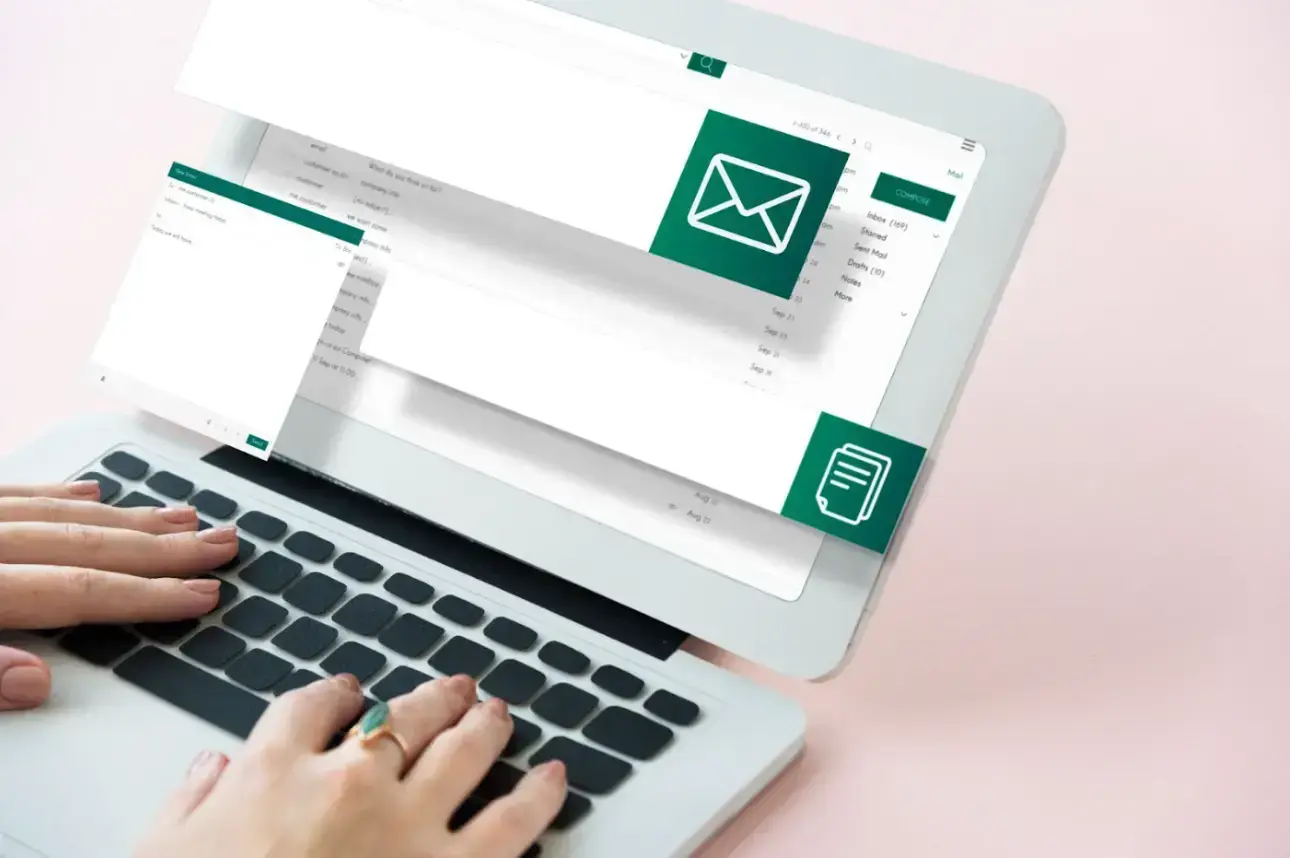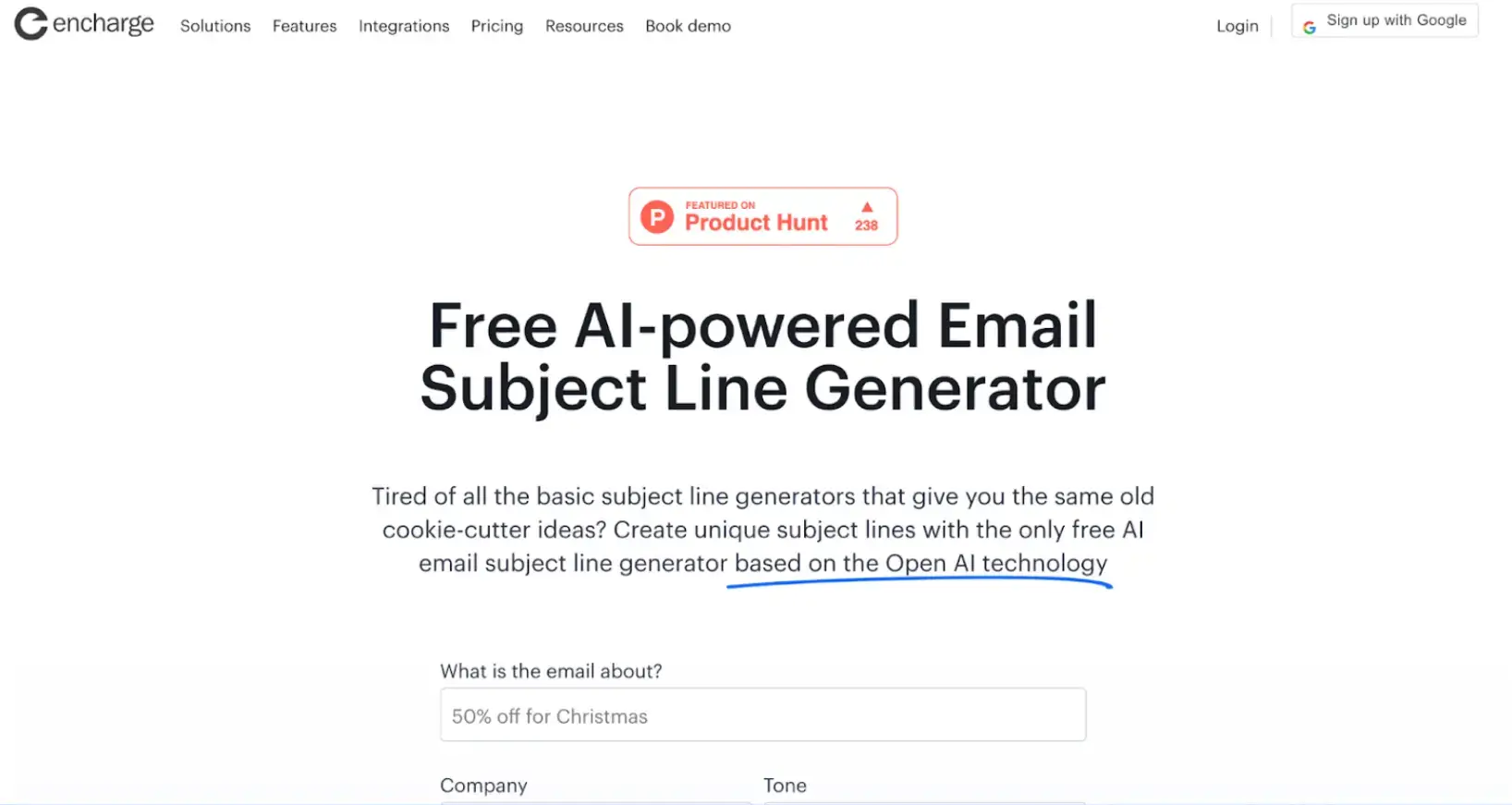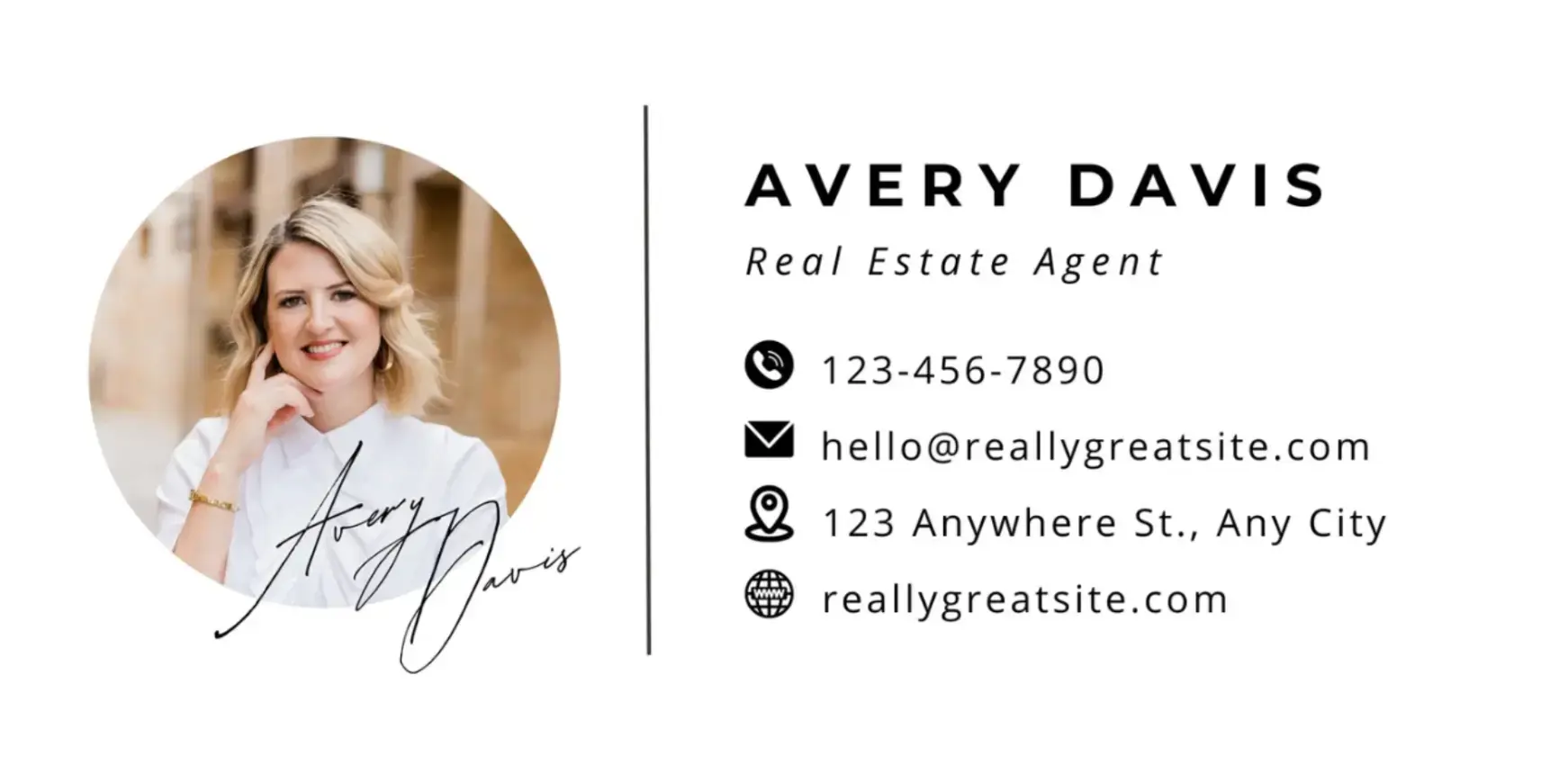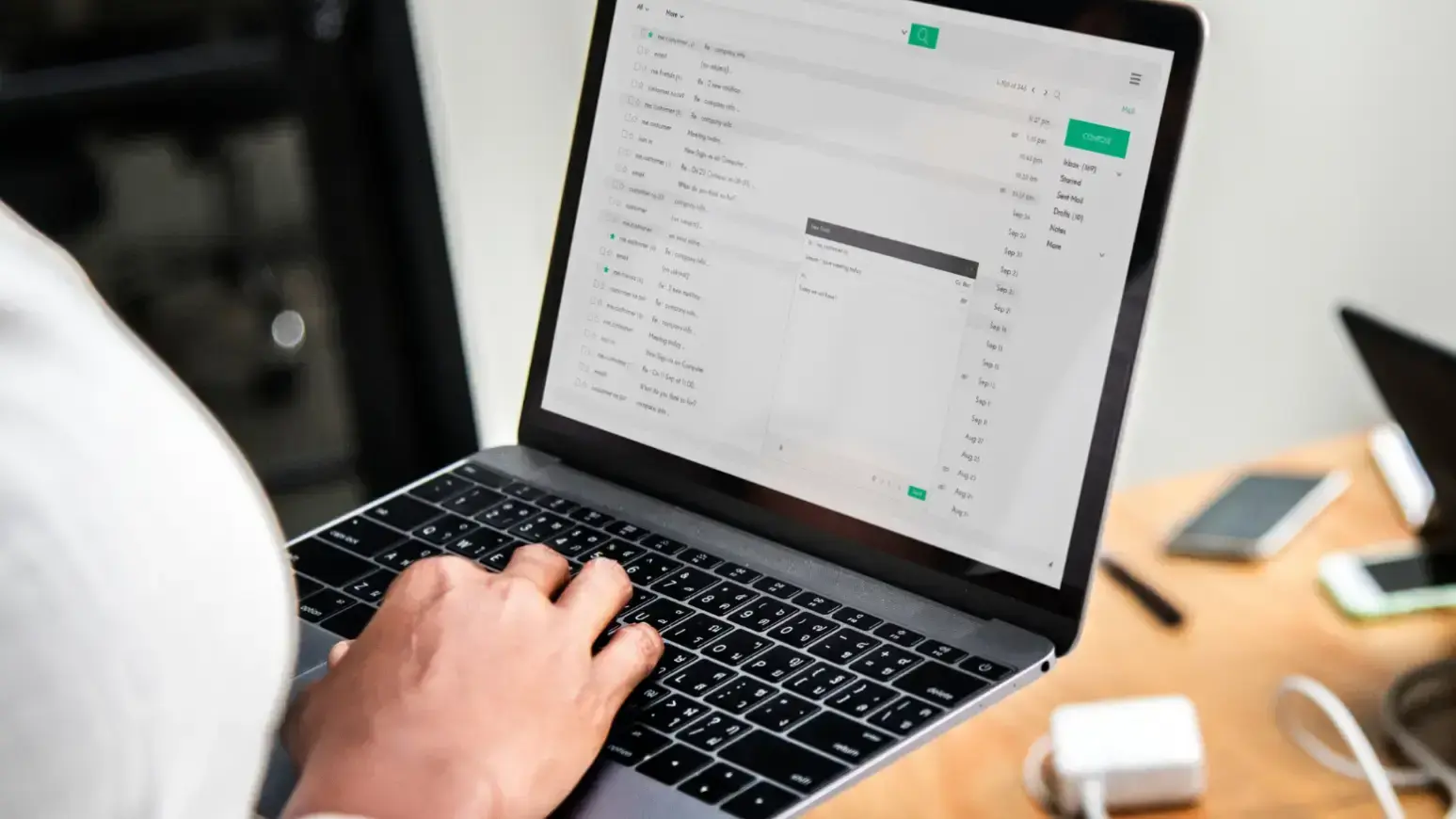Imagine your cold email is like striking up a conversation at a networking event. You want to keep it quick but leave a lasting impression.
Every line should be like a well-placed sentence. It needs to grab their attention and show that you have something valuable to offer.

Source: Freepik
What is a Cold Email?
Ever wonder how business relationships get started? In the real world, it usually begins with a conversation.
Maybe a salesperson strikes up a chat at a conference, but they're not there to shove a brochure in your face. They want to break the ice, learn a bit about you, and see if there's a fit.
The goal isn't to make a sale on the spot but to turn strangers into friendly faces and, eventually, maybe even business partners.
What Has Changed in Cold Emailing?
Remember those old-school cold emails? All about blasting a generic sales pitch to everyone and their inbox.
It worked for a while, but then everyone started doing it, and well, let's say people got tired of the cheesy come-ons.
Just like how a startup builds an MVP first to test the waters before scaling, a cold email should serve as a low-commitment introduction rather than an immediate sales push.
Nobody wants a pushy salesperson on a date, right? The same goes for emails. Personalization is key these days.
The more you know about your potential customers, the better you can tailor your message to their specific needs and problems. It's all about building a connection, not just a sale.
How to Build the Perfect Cold Email
Step 1: Decide on a smart sender’s address
Picture this: You're scrolling through your phone and see a text message from a number you don't recognize.
What's your first instinct? Probably to ignore it, right? That's the same feeling a generic "from" line gives off in a cold email.
It screams stranger danger, and your email will be sent straight to the spam folder before you can even say hello!
The "from" line is like your name tag at a giant meet-and-greet for potential customers. You want them to recognize you and feel comfortable striking up a conversation (or, in this case, opening your email).
Since they're meeting you for the first time, it's crucial to make a good impression. A clear and professional "from" line shows you're not some shady character trying to sell them something dodgy.
If you're reaching out to marketing directors, maybe use your full name and title. If you're targeting entrepreneurs, you could try a more casual approach, like "Your [Company Name] Team."
The key is to find a balance between professionalism and approachability, something that reflects your brand and resonates with your target audience.
Step 2: Write a compelling subject

Imagine your subject line is the key to your prospect's inbox. It's their first impression of you, so you want to make it a good one! A weak subject line can make them slam the door shut (or worse, mark you as spam!). Here's how to avoid that email jail:
- Think like your prospect: What catches their eye? What problem are they trying to solve? Does your subject line offer a solution or pique their curiosity about something they might be struggling with?
- Personalization is key: This isn't the time to brag about yourself. Show them you did your research! Use their name or company to demonstrate you're not just blasting generic emails.
- Spark their curiosity: Don't reveal everything upfront! Tease them with a problem they might have, or use a little flattery to grab their attention.
- Sound human: You're writing to a real person, not a robot! Ditch the sales jargon and overly formal language. Aim for a casual, friendly tone. Imagine you're talking to a colleague, not a stranger.
- Match your email's content: Don't mislead them with clickbaity subject lines! They'll get annoyed and delete your email faster than you can say "open rate."
- Need some inspiration? Check out these examples:
- "[Name], there's a better way to [do something they struggle with]"
- "An idea to boost your [area they can improve]"
- "Have you considered switching to [your product/service]?"
- "Want to scale up [metric] at [Company name]?"
These successful subject lines all tap into three key "needs": improve, change, or innovate. They personalize the message and address a relevant pain point, making them irresistible clicks!
Pro tip: A/B test different subject lines to see which ones get the most opens. This way, you learn what resonates best with your audience.
Step 3: Write a killer introduction
You got them to open your email with a killer subject line!
Now comes the tricky part: keeping them reading beyond the first sentence or two. You basically have 3 seconds to grab their attention. That's where your introduction comes in.
The struggle is real – we all want to jump in and talk about ourselves and our amazing company. But resist the urge! Here's why that approach falls flat:
- Nobody cares (yet): They don't know you, so why should they be interested in your company right away?
- It's all about them: Focus on the recipient! Mention their company, a recent achievement, or some interesting project they're working on. This shows you did your research and personalizes the message.
- Keep it short and sweet: Aim for 2-3 sentences max. This isn't your autobiography; it's an attention grabber.
Pro tip: A touch of flattery can go a long way, but don't go overboard. Gushing about their every move is a bit creepy. Stay professional and focus on why you're reaching out from a business perspective.
Here are some ideas to get your creative juices flowing:
- Highlight a problem you know they face: "I noticed [Company Name] is tackling [challenge]. I have some ideas on how to [offer a solution]."
- Ask a thought-provoking question: "What are some of the biggest challenges you face when it comes to [area of their expertise]?" Apply Behavioral Interview Questions strategies in cold emails to create engaging, thought-provoking messages that resonate with potential clients.
The most important thing is to make them feel valued. Show them this email isn't a random mass blast. You took the time to research them and reached out specifically because you think you can help.
Bonus tip: Before you even write a word, do your homework! Research the company, their recent projects, and anything else that might be relevant.
Step 4: Include value
Alright, you've hooked them with a great intro. Now it's time for your pitch – the part where you explain what you want. But ditch the cheesy sales tactics!
Here's why the "hard sell" doesn't work in cold emails:
- Templates are a turn-off: Nobody wants a generic pitch that could be sent to anyone. It screams "mass blast" and lacks personality.
- Focus on them, not you: This isn't about bragging about your product. It's about how you can benefit their business.
- Become a problem solver: Identify their challenges and showcase how your product/service can solve them. Use storytelling to paint a picture of how your product/service relieves their pain points. For example, if your prospect is evaluating deployment options, a brief SaaS vs. on-premise comparison can help them see which solution best aligns with their business needs.
Highlight benefits, not features: People don't care about all the bells and whistles – they care about what your offering will do for them. Focus on specific benefits that address their needs. Don't be vague – clear and concise communication is key!
This section also includes a link to an additional resource, but you can remove that based on your previous instructions.
Remember, your pitch should flow naturally from your introduction. It should feel like a friendly conversation, not a forced sales script.
Step 5: Always conclude with a CTA
Almost there! The last piece of the puzzle is your call to action (CTA). This is where you tell your prospect what you want them to do next, whether it's scheduling a call, giving feedback, or simply replying to your email.
Here's how to craft a CTA that gets results:
- Be crystal clear: Don't leave them guessing! Your CTA should clearly state the desired action in a single sentence. What do you want them to do after reading your email?
- Keep it short and sweet: One sentence is all you need. Don't get bogged down with complex wording or long-winded requests.
- Make it easy: Start small. Don't overwhelm them with a request for a lengthy call right away. Maybe a quick reply or a short demo will work better. You can always build towards a meeting later.
Remember, you're starting a conversation, not closing a deal. Focus on a simple action they can take right now to move things forward.
Step 6: Oh! And your signature

Don't forget the finishing touch to your email template! It's like your handshake at the end of a conversation. Here's how to make it stand out:
- Build trust: A good signature shows you're a real person with a real company. Include your name, title, and maybe even a link to your professional profile (like LinkedIn). A little info goes a long way!
- Keep it concise: Focus on the essentials. Do you really need your fax number in there? Edit ruthlessly and include only contact details relevant to your outreach.
- Less is more (especially with HTML): Fancy formatting can get tricky. If you're unsure about coding, stick to plain text. A clean and simple signature is always professional.
Top Cold Email Copywriting Frameworks

Source: Freepik
Various copywriting frameworks can help structure your cold email outreach. These include AIDA, PAS, QUEST, and the 4-Ps. It’s crucial to view these templates as formulas guiding the overall sales process rather than just templates to be copied or slightly modified.
The AIDA Formula
AIDA is a straightforward method for creating effective cold emails. It stands for Attention, Interest, Desire, and Action, outlining how to construct the body of your email:
- Attention: Capture their attention with a compelling cold email subject line. It should be brief, striking, and stand out from the numerous emails your prospects receive.
- Interest: Address their potential questions and explain why your offering would interest them.
- Desire: Demonstrate how your solution can solve their problems and make their lives easier, creating a desire for your product or service.
- Action: Conclude with a strong call to action (CTA), whether it’s requesting a meeting or asking them to reply.
The 4-Ps Framework
The 4-Ps framework divides cold emailing into four stages: Preparation, Personalized approach, Positioning, and Post-email. This method helps streamline the task of writing cold emails and prevents common mistakes.
- Preparation: Gather all necessary information about the recipient before starting.
- Personalized Approach: Craft personalized emails to increase their effectiveness.
- Positioning: Establish yourself as an authority by showcasing your experience and expertise. Present the problem your product or service solves without a hard sell.
- Post-email: Follow up on your emails to maximize results and avoid wasting resources.
The PAS Framework
The PAS framework, which stands for Problem, Agitation, and Solution, is a widely used method for capturing and retaining attention.
- Problem: Identify the recipient’s pain points and how your offering can address them.
- Agitation: Use concise and straightforward language to emphasize the urgency of their problem and why they need your solution.
- Solution: Offer a clear solution, outlining the benefits of implementing your offering without resorting to a hard sell.
The FAB Framework
The FAB framework is a simple way to present your product or service in cold emails, and it is especially popular among product marketers in the software industry. It comprises three elements:
- Features: Highlight the features that distinguish your product or service, ensuring they are communicated concisely.
- Advantages: Explain why your solution is preferable to others, using detailed, reassuring arguments.
- Benefits: Clearly state the benefits the recipient will gain from your product or service, emphasizing its value.
These frameworks provide structured approaches to crafting effective B2B cold emails, enhancing your outreach success.
Frequently Asked Questions About B2B Cold Emails
1. What is a B2B cold email?
A B2B cold email is an unsolicited email sent to a potential business contact or company to start a conversation, build rapport, or initiate a sales opportunity.
2. How do I write a high-converting B2B cold email?
Start with a personalized subject line, craft a relatable introduction, offer clear value, and end with a strong CTA. Focus on the recipient’s needs, not your product.
3. What should I avoid in a B2B cold email?
Avoid generic templates, spammy subject lines, long paragraphs, and hard-sell tactics. Instead, be clear, concise, and personalized.
4. How long should a B2B cold email be?
Ideally, a cold email should be 100–150 words. Keep it short, scannable, and focused on one clear message or call to action.
5. What’s the best time to send a B2B cold email?
Mornings on weekdays—especially Tuesday to Thursday—tend to get the highest open rates. A/B test different times to find what works best for your audience.
Conclusion
Crafting the perfect cold email for B2B sales is akin to initiating a conversation at a networking event: brief yet impactful.
The goal is to build relationships, not to make immediate sales. The shift from generic, impersonal emails to personalized, thoughtful messages has become crucial. Effective cold emails are now about understanding the prospect's needs, presenting value, and fostering connections.
The guide provides a comprehensive approach, emphasizing the importance of a recognizable, professional sender address, an attention-grabbing subject line, and a recipient-focused introduction.
Just like crafting effective cold emails, a strong SEO service is essential to ensuring your content ranks well, reaches the right audience, and drives consistent engagement.
Highlighting how your product or service can solve the recipient’s problems and concluding with a clear call to action are vital components.
Personalization and relevance are the keys to transforming cold emails from being ignored to initiating meaningful business conversations, making them an essential tool in modern B2B sales strategies.

Author Bio
Shubham Dhameja is an experienced outreach specialist with a solid two-year track record in the industry. Known for his expertise in building relationships and enhancing brand visibility, Shubham has consistently demonstrated a keen ability to connect with audiences and foster engagement.

